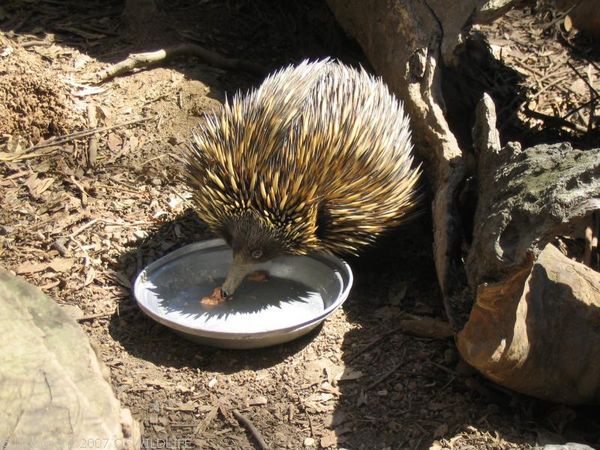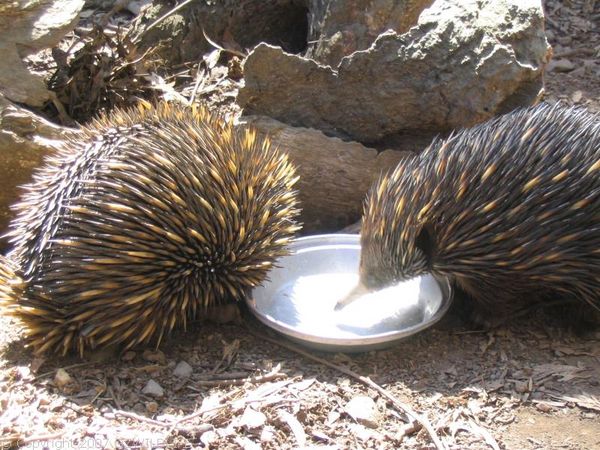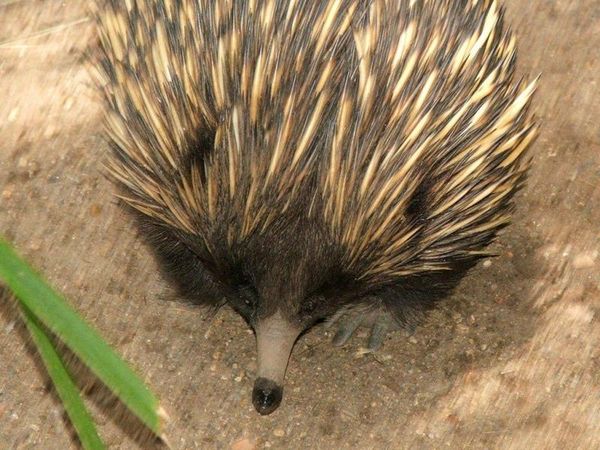|

Echidna feeding at Currumbin Sanctuary.
Image by ozwildlife - Some rights reserved.
|

Pair of Echidnas feeding at Currumbin Sanctuary.
Image by ozwildlife - Some rights reserved.
|

Short-beaked Echidna
Photograph copyright: Nickolay Tilcheff - all rights reserved. Used with permission.
|
|
|
MAMMAL FACTS |
Description
The Short-beaked Echidna has a long sticky tongue for catching ants and other insects. It is a monotreme - that means it lays eggs. The prickly coat gives it protection - much like a hedgehog or porcupine. Has strong claws for digging and tearing termite mounds apart. Males have spur on ankle These are not venomous (unlike the Platypus spurs which are venomous).
Size
About 40cm long. Roughly the size of a cat.
Habitat
found over all Australia. They are solitary creatures, and hard to find in the wild
Food
Termites, also ants and worms. Has long tongue about 15-18cm long with sticky coating for catching termites and ants. Echidnas have no teeth.
Breeding
The female lays a single soft-shelled egg and keeps it in her pouch until it hatches. The egg is round, leathery cream coloured about the size of a grape and hatches after about 10 days. The baby is called a puggle (... sounds like something from Harry Potter)

Credits:
Map is from Atlas of Living Australia website at https://biocache.ala.org.au licensed under Creative Commons Attribution 3.0 License.
Classification
| Class: | Mammalia | | Order: | Monotremata | | Family: | Tachyglossidae | | Genus: | Tachyglossus | | Species: | aculeatus | | Common Name: | Short-beaked Echidna |
|
|

